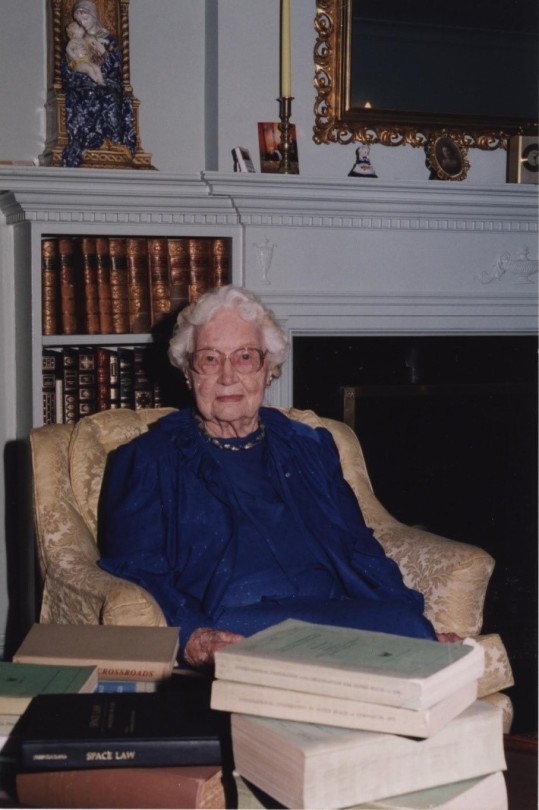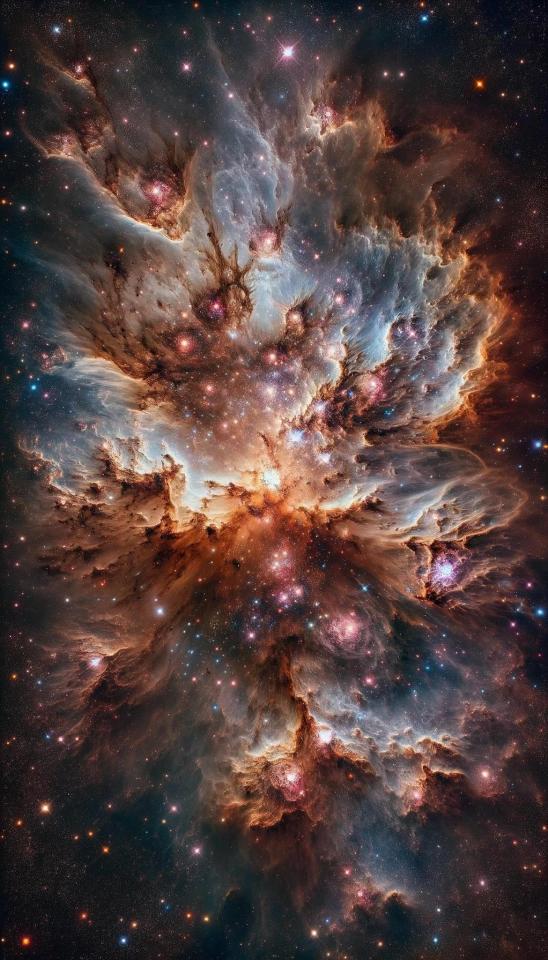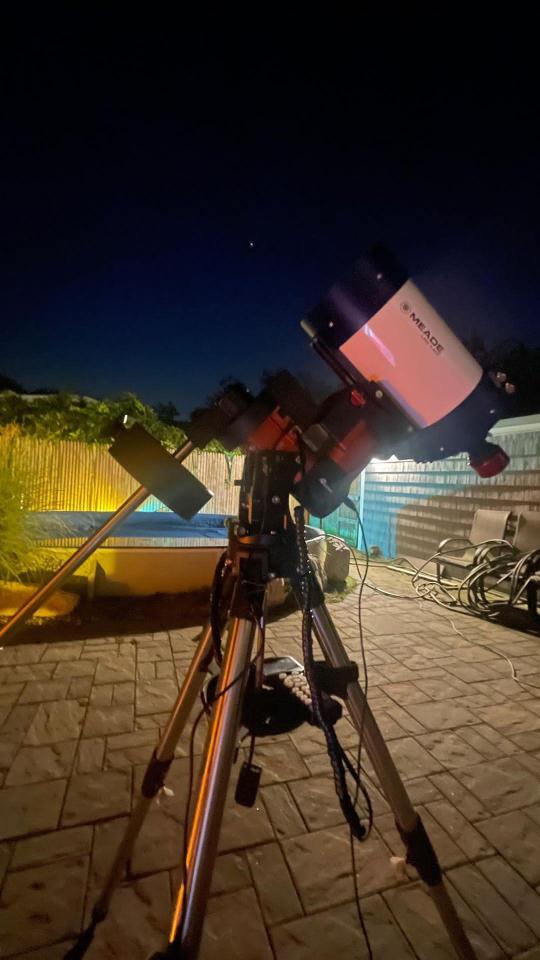Astronomers Have Discovered The Slowest Spinning Radio Wave-blasting Neutron Star Ever Seen; It Takes

Astronomers have discovered the slowest spinning radio wave-blasting neutron star ever seen; it takes almost an hour to complete a full rotation. That may sound rather fast, but these dead stars are known to spin so rapidly that some experience 700 full turns every second. Even the most leisurely of the about 3,000 radio-emitting neutron stars, or "pulsars," discovered so far complete a full rotation in a second or so. This ultra-leisurely neutron star, however, designated ASKAP J1935+2148 and located 16,000 light-years from Earth, is emitting radio light at a rate too slow to even fit with current theories describing the behavior of these dense stellar remnants.
Continue Reading.
More Posts from Cedezsstuff and Others

LaRue Burbank, mathematician and computer, is just one of the many women who were instrumental to NASA missions.
4 Little Known Women Who Made Huge Contributions to NASA
Women have always played a significant role at NASA and its predecessor NACA, although for much of the agency’s history, they received neither the praise nor recognition that their contributions deserved. To celebrate Women’s History Month – and properly highlight some of the little-known women-led accomplishments of NASA’s early history – our archivists gathered the stories of four women whose work was critical to NASA’s success and paved the way for future generations.
LaRue Burbank: One of the Women Who Helped Land a Man on the Moon
LaRue Burbank was a trailblazing mathematician at NASA. Hired in 1954 at Langley Memorial Aeronautical Laboratory (now NASA’s Langley Research Center), she, like many other young women at NACA, the predecessor to NASA, had a bachelor's degree in mathematics. But unlike most, she also had a physics degree. For the next four years, she worked as a "human computer," conducting complex data analyses for engineers using calculators, slide rules, and other instruments. After NASA's founding, she continued this vital work for Project Mercury.
In 1962, she transferred to the newly established Manned Spacecraft Center (now NASA’s Johnson Space Center) in Houston, becoming one of the few female professionals and managers there. Her expertise in electronics engineering led her to develop critical display systems used by flight controllers in Mission Control to monitor spacecraft during missions. Her work on the Apollo missions was vital to achieving President Kennedy's goal of landing a man on the Moon.
Eilene Galloway: How NASA became… NASA

Eilene Galloway wasn't a NASA employee, but she played a huge role in its very creation. In 1957, after the Soviet Union launched Sputnik, Senator Richard Russell Jr. called on Galloway, an expert on the Atomic Energy Act, to write a report on the U.S. response to the space race. Initially, legislators aimed to essentially re-write the Atomic Energy Act to handle the U.S. space goals. However, Galloway argued that the existing military framework wouldn't suffice – a new agency was needed to oversee both military and civilian aspects of space exploration. This included not just defense, but also meteorology, communications, and international cooperation.
Her work on the National Aeronautics and Space Act ensured NASA had the power to accomplish all these goals, without limitations from the Department of Defense or restrictions on international agreements. Galloway is even to thank for the name "National Aeronautics and Space Administration", as initially NASA was to be called “National Aeronautics and Space Agency” which was deemed to not carry enough weight and status for the wide-ranging role that NASA was to fill.
Barbara Scott: The “Star Trek Nerd” Who Led Our Understanding of the Stars

A self-described "Star Trek nerd," Barbara Scott's passion for space wasn't steered toward engineering by her guidance counselor. But that didn't stop her! Fueled by her love of math and computer science, she landed at Goddard Spaceflight Center in 1977. One of the first women working on flight software, Barbara's coding skills became instrumental on missions like the International Ultraviolet Explorer (IUE) and the Thermal Canister Experiment on the Space Shuttle's STS-3. For the final decade of her impressive career, Scott managed the flight software for the iconic Hubble Space Telescope, a testament to her dedication to space exploration.
Dr. Claire Parkinson: An Early Pioneer in Climate Science Whose Work is Still Saving Lives

Dr. Claire Parkinson's love of math blossomed into a passion for climate science. Inspired by the Moon landing, and the fight for civil rights, she pursued a graduate degree in climatology. In 1978, her talents landed her at Goddard, where she continued her research on sea ice modeling. But Parkinson's impact goes beyond theory. She began analyzing satellite data, leading to a groundbreaking discovery: a decline in Arctic sea ice coverage between 1973 and 1987. This critical finding caught the attention of Senator Al Gore, highlighting the urgency of climate change.
Parkinson's leadership extended beyond research. As Project Scientist for the Aqua satellite, she championed making its data freely available. This real-time information has benefitted countless projects, from wildfire management to weather forecasting, even aiding in monitoring the COVID-19 pandemic. Parkinson's dedication to understanding sea ice patterns and the impact of climate change continues to be a valuable resource for our planet.
Make sure to follow us on Tumblr for your regular dose of space!



Saturn by NASA (2019
So Venus is my favorite planet in the solar system - everything about it is just so weird.

It has this extraordinarily dense atmosphere that by all accounts shouldn't exist - Venus is close enough to the sun (and therefore hot enough) that the atmosphere should have literally evaporated away, just like Mercury's. We think Earth manages to keep its atmosphere by virtue of our magnetic field, but Venus doesn't even have that going for it. While Venus is probably volcanically active, it definitely doesn't have an internal magnetic dynamo, so whatever form of volcanism it has going on is very different from ours. And, it spins backwards! For some reason!!
But, for as many mysteries as Venus has, the United States really hasn't spent much time investigating it. The Soviet Union, on the other hand, sent no less than 16 probes to Venus between 1961 and 1984 as part of the Venera program - most of them looked like this!

The Soviet Union had a very different approach to space than the United States. NASA missions are typically extremely risk averse, and the spacecraft we launch are generally very expensive one-offs that have only one chance to succeed or fail.
It's lead to some really amazing science, but to put it into perspective, the Mars Opportunity rover only had to survive on Mars for 90 days for the mission to be declared a complete success. That thing lasted 15 years. I love the Opportunity rover as much as any self-respecting NASA engineer, but how much extra time and money did we spend that we didn't technically "need" to for it to last 60x longer than required?
Anyway, all to say, the Soviet Union took a more incremental approach, where failures were far less devastating. The Venera 9 through 14 probes were designed to land on the surface of Venus, and survive long enough to take a picture with two cameras - not an easy task, but a fairly straightforward goal compared to NASA standards. They had…mixed results.
Venera 9 managed to take a picture with one camera, but the other one's lens cap didn't deploy.
Venera 10 also managed to take a picture with one camera, but again the other lens cap didn't deploy.
Venera 11 took no pictures - neither lens cap deployed this time.
Venera 12 also took no pictures - because again, neither lens cap deployed.
Lotta problems with lens caps.
For Venera 13 and 14, in addition to the cameras they sent a device to sample the Venusian "soil". Upon landing, the arm was supposed to swing down and analyze the surface it touched - it was a simple mechanism that couldn't be re-deployed or adjusted after the first go.
This time, both lens caps FINALLY ejected perfectly, and we were treated to these marvelous, eerie pictures of the Venus landscape:

However, when the Venera 14 soil sampler arm deployed, instead of sampling the Venus surface, it managed to swing down and land perfectly on….an ejected lens cap.








‘Love is the one thing that we’re capable of perceiving that transcends dimensions of time and space.’
“Eulogy from a Physicist” by Aaron Freeman, with quotes from Interstellar by Christopher Nolan, and images from NASA, Interstellar, Getty, Petrichara, and Reuters.
1- NASA: GOODS-South.
2- NASA: NGC 1850.
3- NASA: Iberian Peninsula.
4- Christopher Nolan: Interstellar.
5- NASA: From the Earth to the Moon.
6- Hannah La Folette Ryan: Subway Hands.
7- Adams Evans: Heart Nebula.
8- NASA: Exploring the Antennae.
9- NASA: Crescent Moon from the International Space Station.
10- Petrichara.
11- Getty Images.
12- NASA: SMACS 0723.
13- Reuters

Jessica Wittner
Jessica Wittner, a lieutenant commander in the U.S. Navy, hails from California. A National Outdoor Leadership School alum, Wittner enjoys riding motorcycles and off-roading. https://go.nasa.gov/49CxwUN
Make sure to follow us on Tumblr for your regular dose of space!


Full Hunter's Moon © astronycc

From a million miles away, NASA captures Moon crossing face of Earth. Credit: NASA/NOAA
Do You Love the Color of the Sun?

Get dazzled by the true spectrum of solar beauty. From fiery reds to cool blues, explore the vibrant hues of the Sun in a mesmerizing color order. The images used to make this gradient come from our Solar Dynamics Observatory. Taken in a variety of wavelengths, they give scientists a wealth of data about the Sun. Don't miss the total solar eclipse crossing North America on April 8, 2024. (It's the last one for 20 years!) Set a reminder to watch with us.






Think we're the only planet with life? 350mp quality. Remember to download to your phone and zoom in. Gets even more beautiful. Yes this is a nebula, yes I know there’s no life in a nebula. Of course these are not real photos. Duh!




Volcano Eruptions seen from Space photos: NASA
-
 thesongofnevermore liked this · 1 month ago
thesongofnevermore liked this · 1 month ago -
 mummifiedraven liked this · 3 months ago
mummifiedraven liked this · 3 months ago -
 john-erby liked this · 4 months ago
john-erby liked this · 4 months ago -
 the-artistic-dragoness reblogged this · 4 months ago
the-artistic-dragoness reblogged this · 4 months ago -
 the-artistic-dragoness liked this · 4 months ago
the-artistic-dragoness liked this · 4 months ago -
 thebigmole liked this · 6 months ago
thebigmole liked this · 6 months ago -
 gay4carver liked this · 6 months ago
gay4carver liked this · 6 months ago -
 real-isaac-clarke reblogged this · 6 months ago
real-isaac-clarke reblogged this · 6 months ago -
 system32sys-hub liked this · 6 months ago
system32sys-hub liked this · 6 months ago -
 cubedotpng liked this · 6 months ago
cubedotpng liked this · 6 months ago -
 cedezsstuff reblogged this · 7 months ago
cedezsstuff reblogged this · 7 months ago -
 chef-blah reblogged this · 8 months ago
chef-blah reblogged this · 8 months ago -
 chef-blah liked this · 8 months ago
chef-blah liked this · 8 months ago -
 solarpunkbiologist reblogged this · 8 months ago
solarpunkbiologist reblogged this · 8 months ago -
 okkonen reblogged this · 9 months ago
okkonen reblogged this · 9 months ago -
 tracxjha liked this · 10 months ago
tracxjha liked this · 10 months ago -
 silvereyedowl reblogged this · 10 months ago
silvereyedowl reblogged this · 10 months ago -
 entityethereal liked this · 10 months ago
entityethereal liked this · 10 months ago -
 coronamevolutio liked this · 11 months ago
coronamevolutio liked this · 11 months ago -
 yourbelovedsekky reblogged this · 11 months ago
yourbelovedsekky reblogged this · 11 months ago -
 spira---mirabilis liked this · 11 months ago
spira---mirabilis liked this · 11 months ago -
 spira---mirabilis reblogged this · 11 months ago
spira---mirabilis reblogged this · 11 months ago -
 rosesandtheuniverse reblogged this · 11 months ago
rosesandtheuniverse reblogged this · 11 months ago -
 spacesuitcat liked this · 11 months ago
spacesuitcat liked this · 11 months ago -
 abandonrun liked this · 11 months ago
abandonrun liked this · 11 months ago -
 tiltingplanet reblogged this · 11 months ago
tiltingplanet reblogged this · 11 months ago -
 djdhenbdd liked this · 11 months ago
djdhenbdd liked this · 11 months ago -
 very-kind-human liked this · 11 months ago
very-kind-human liked this · 11 months ago -
 stingrei-08 liked this · 11 months ago
stingrei-08 liked this · 11 months ago -
 sylvanthorn reblogged this · 11 months ago
sylvanthorn reblogged this · 11 months ago -
 sylvanthorn liked this · 11 months ago
sylvanthorn liked this · 11 months ago -
 somanystars liked this · 11 months ago
somanystars liked this · 11 months ago -
 minosbull liked this · 11 months ago
minosbull liked this · 11 months ago -
 that-bluesybitch reblogged this · 11 months ago
that-bluesybitch reblogged this · 11 months ago -
 entropiy liked this · 11 months ago
entropiy liked this · 11 months ago -
 dracosiwa liked this · 11 months ago
dracosiwa liked this · 11 months ago -
 whispers-with-the-moon liked this · 11 months ago
whispers-with-the-moon liked this · 11 months ago -
 adictoalatinta liked this · 11 months ago
adictoalatinta liked this · 11 months ago -
 old-feeling-nothing reblogged this · 11 months ago
old-feeling-nothing reblogged this · 11 months ago -
 jetpackwhalesworld liked this · 1 year ago
jetpackwhalesworld liked this · 1 year ago -
 hopelysworld liked this · 1 year ago
hopelysworld liked this · 1 year ago -
 wicked-binch liked this · 1 year ago
wicked-binch liked this · 1 year ago -
 shippin-my-sanses liked this · 1 year ago
shippin-my-sanses liked this · 1 year ago -
 spamgriffinsect reblogged this · 1 year ago
spamgriffinsect reblogged this · 1 year ago -
 what-is-the-irony-of-grass reblogged this · 1 year ago
what-is-the-irony-of-grass reblogged this · 1 year ago -
 homo-homo-sapiens-sapiens liked this · 1 year ago
homo-homo-sapiens-sapiens liked this · 1 year ago -
 capy-barista reblogged this · 1 year ago
capy-barista reblogged this · 1 year ago -
 monster-fuzz liked this · 1 year ago
monster-fuzz liked this · 1 year ago
